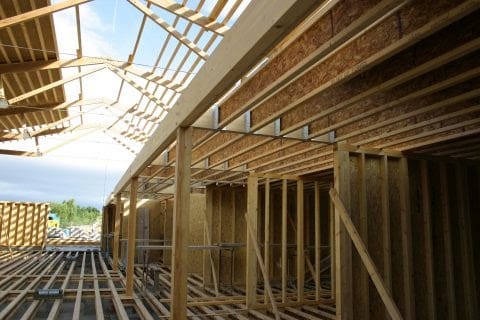How Much Do Different Types of Roof Trusses Cost?
Are you wondering how much different types of roof trusses cost? In this article, we take a look at the costs involved with using different roof truss types; explain how you can reduce build costs as well as offering advice on which type of roof truss is best for your project.
The type of roof truss you choose can have a big impact on the overall cost of the roof and the house as a whole.
Every structure built is different and has to stand up to varying stresses so it’s not as easy as a ‘one size fits all’ solution.
Our handy guide ‘The Different Types of Roof Trusses and Their Uses’ outlines the different roof trusses available as well as the uses and strengths of each. To find out about what factors affect the cost of a truss, keep reading…
What Affects the Roof Truss Cost?
A variety of factors can affect the cost of your trusses, for instance the type of truss, the span, pitch, how many are required and also the type of timber that is used.
Complexity is the biggest factor when it comes to the cost of building a house and roof trusses are no different. Quite simply put, the less complex the shape of the roof, the cheaper it should be to construct.
You have to weigh up the pros and cons of each type and whether they’ll be more or less cost-effective in the long run. For example, a Fink Truss will save you lots in the short term but if you’re planning to use the loft space for anything practical other than light storage, you may want to invest in a more expensive truss (Room-in-Roof Truss) that will allow for future expansion into the loft space.
Below we take a look at the most common types of trusses and what affects their cost.
Fink Roof Truss

The most common type of truss used in modern homes, and the most cost effective, is the Fink Truss. The thickness of timber used affects the cost of the truss. The Fink Truss uses a 35mm timber section size; unless the span of the roof truss is more than 12.075 metres then a thicker timber section must be used, thus increasing the cost of the design. Likewise, the shallowness of the pitch can be a factor in which increases the cost. This is because, again, a thicker timber section needs to be used to give strength to the truss.
Attic (aka Room in Roof) Roof Truss

The Attic (or Room-in-roof) Truss is one of the most expensive type of truss. The Attic Truss is most commonly used to add another floor to a home. The larger the span and/or the wider the room, the bigger the depth of timber is required, thus increasing the cost of the truss. Furthermore, if you require openings such as, a stairwell, dormers or a roof light, then this also increases the cost of your trusses. This is because more material, such as cut trusses or infill timber is required. Also, two ply girder trusses (more than one truss fixed together) will be needed to provide strength to the roof.
Raised Tie Roof Truss

Raised Tie Roof Trusses can also be quite an expensive truss as the depth of timber on the top chords of the truss has to be large enough for insulation (normally the minimum depth of timber required is 147mm). Furthermore, the higher the raised tie the thicker the timber needs to be to be able to support the roof, and so increases the cost of the roof truss. Again, like the Attic Truss, if openings such as dormers or roof lights are required this can increase the cost, as girder trusses are needed.
How Can I Reduce Roof Truss Costs?
Self-builders can save money by offering to labour for the skilled tradesmen such as carpenters or roof tilers.
However, one thing you can’t do is use cheap materials. Roof trusses have to be what our Pasquill Designers determine and the timber sizes have got to be exactly what the architect or engineer specifies. You get what you pay for!
For more information about Pasquill roof trusses visit our Roof Trusses page or contact us for a quote today.




